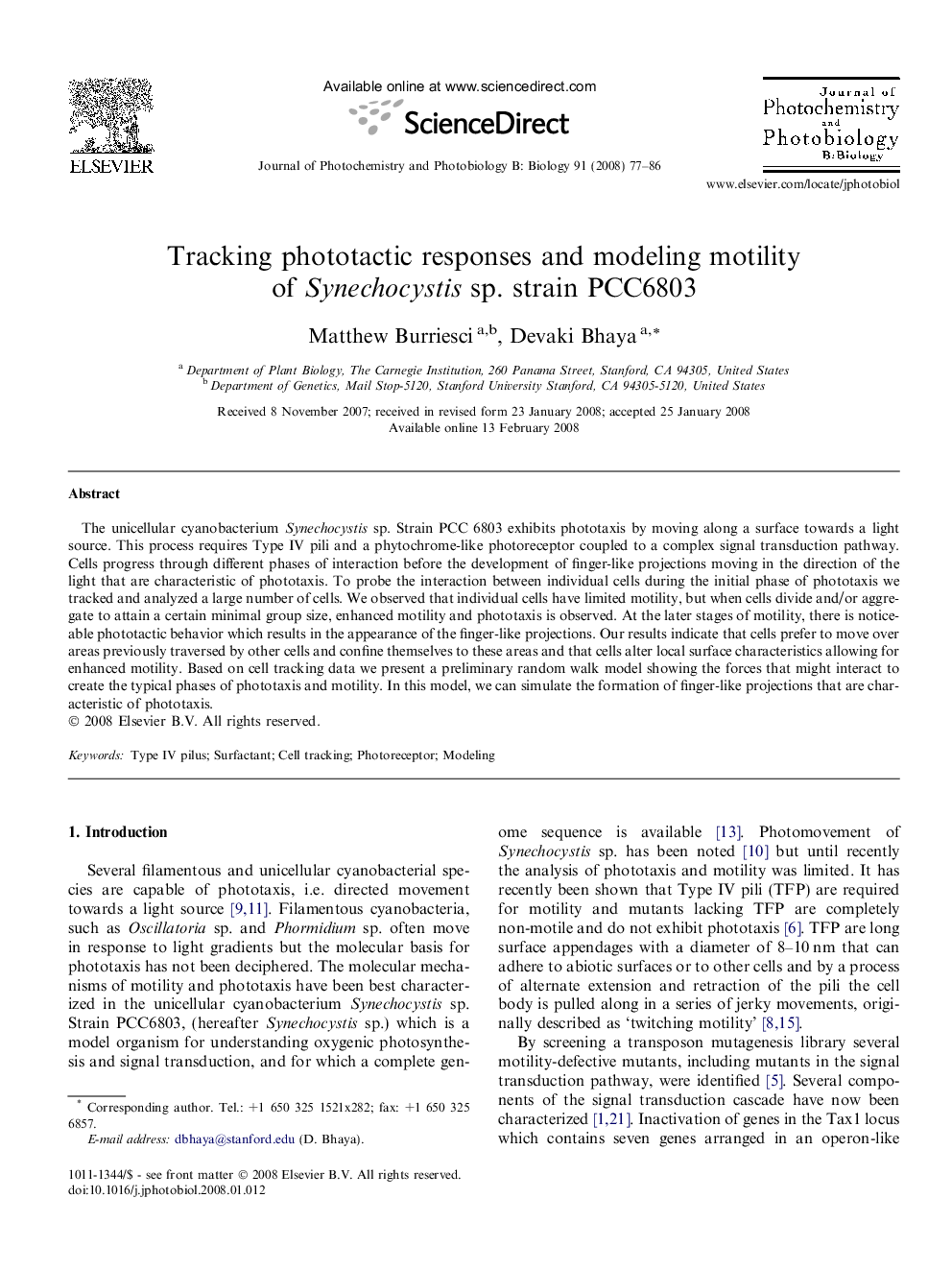| Article ID | Journal | Published Year | Pages | File Type |
|---|---|---|---|---|
| 30364 | Journal of Photochemistry and Photobiology B: Biology | 2008 | 10 Pages |
The unicellular cyanobacterium Synechocystis sp. Strain PCC 6803 exhibits phototaxis by moving along a surface towards a light source. This process requires Type IV pili and a phytochrome-like photoreceptor coupled to a complex signal transduction pathway. Cells progress through different phases of interaction before the development of finger-like projections moving in the direction of the light that are characteristic of phototaxis. To probe the interaction between individual cells during the initial phase of phototaxis we tracked and analyzed a large number of cells. We observed that individual cells have limited motility, but when cells divide and/or aggregate to attain a certain minimal group size, enhanced motility and phototaxis is observed. At the later stages of motility, there is noticeable phototactic behavior which results in the appearance of the finger-like projections. Our results indicate that cells prefer to move over areas previously traversed by other cells and confine themselves to these areas and that cells alter local surface characteristics allowing for enhanced motility. Based on cell tracking data we present a preliminary random walk model showing the forces that might interact to create the typical phases of phototaxis and motility. In this model, we can simulate the formation of finger-like projections that are characteristic of phototaxis.
